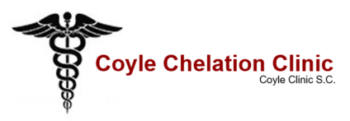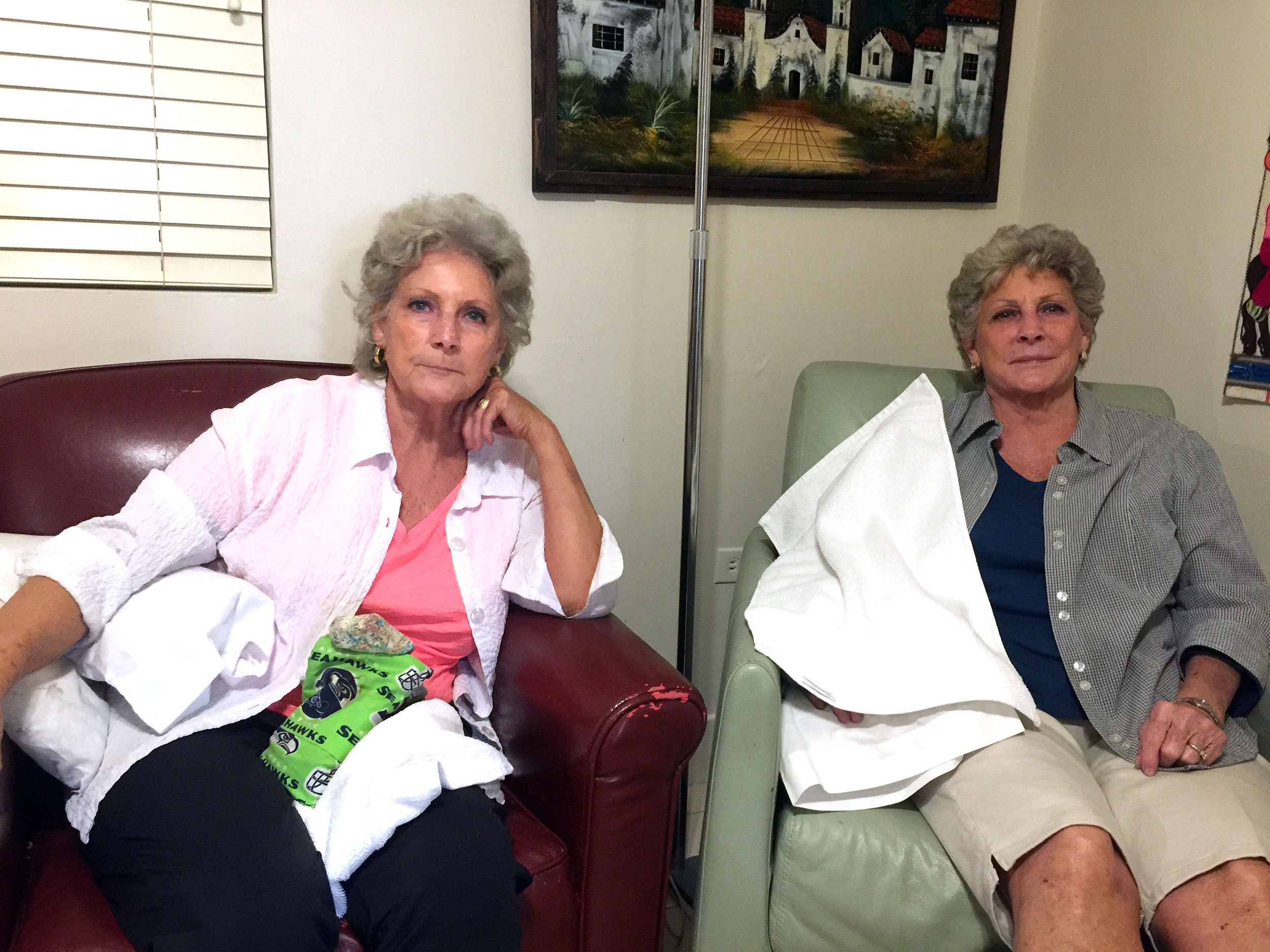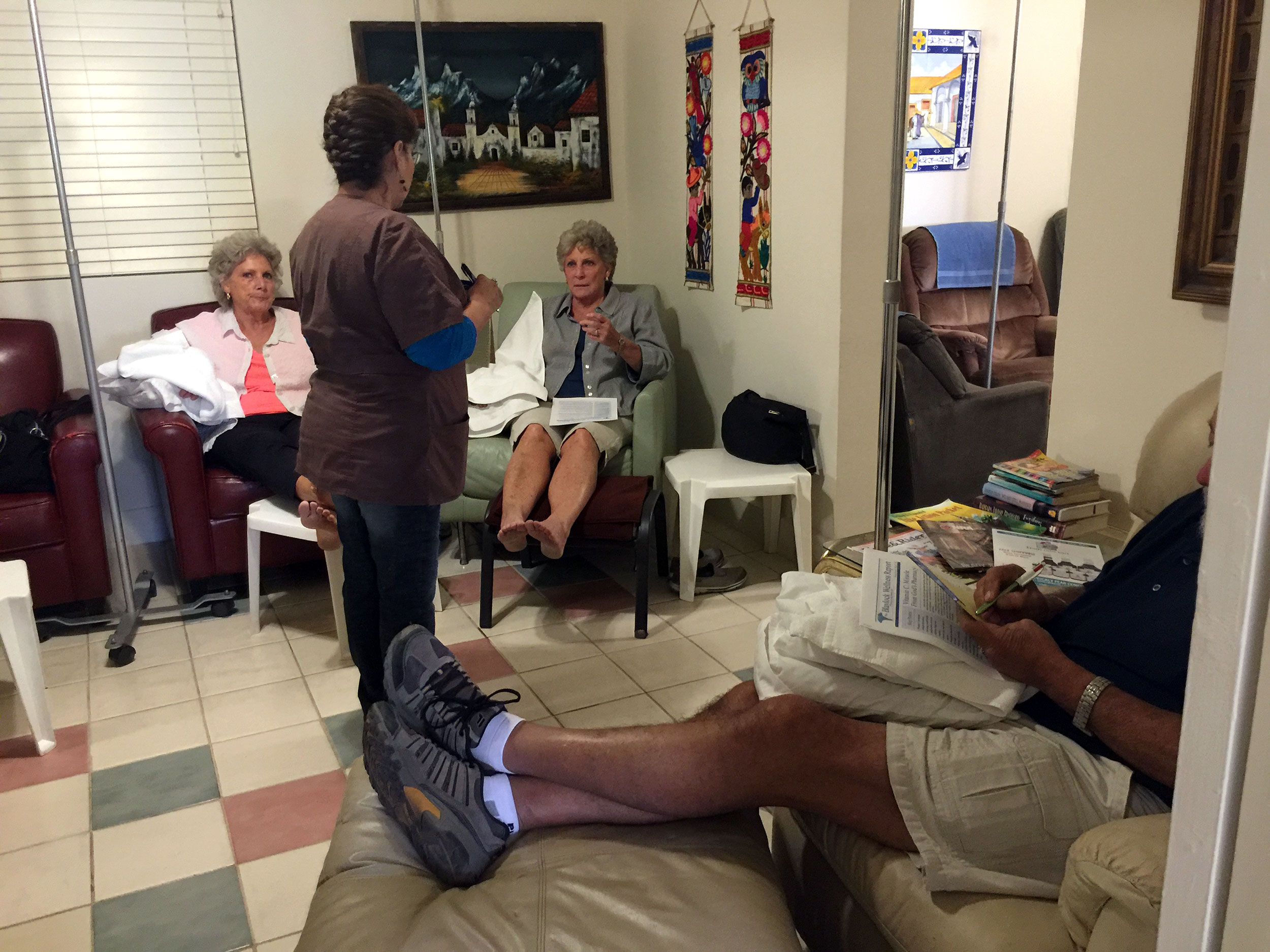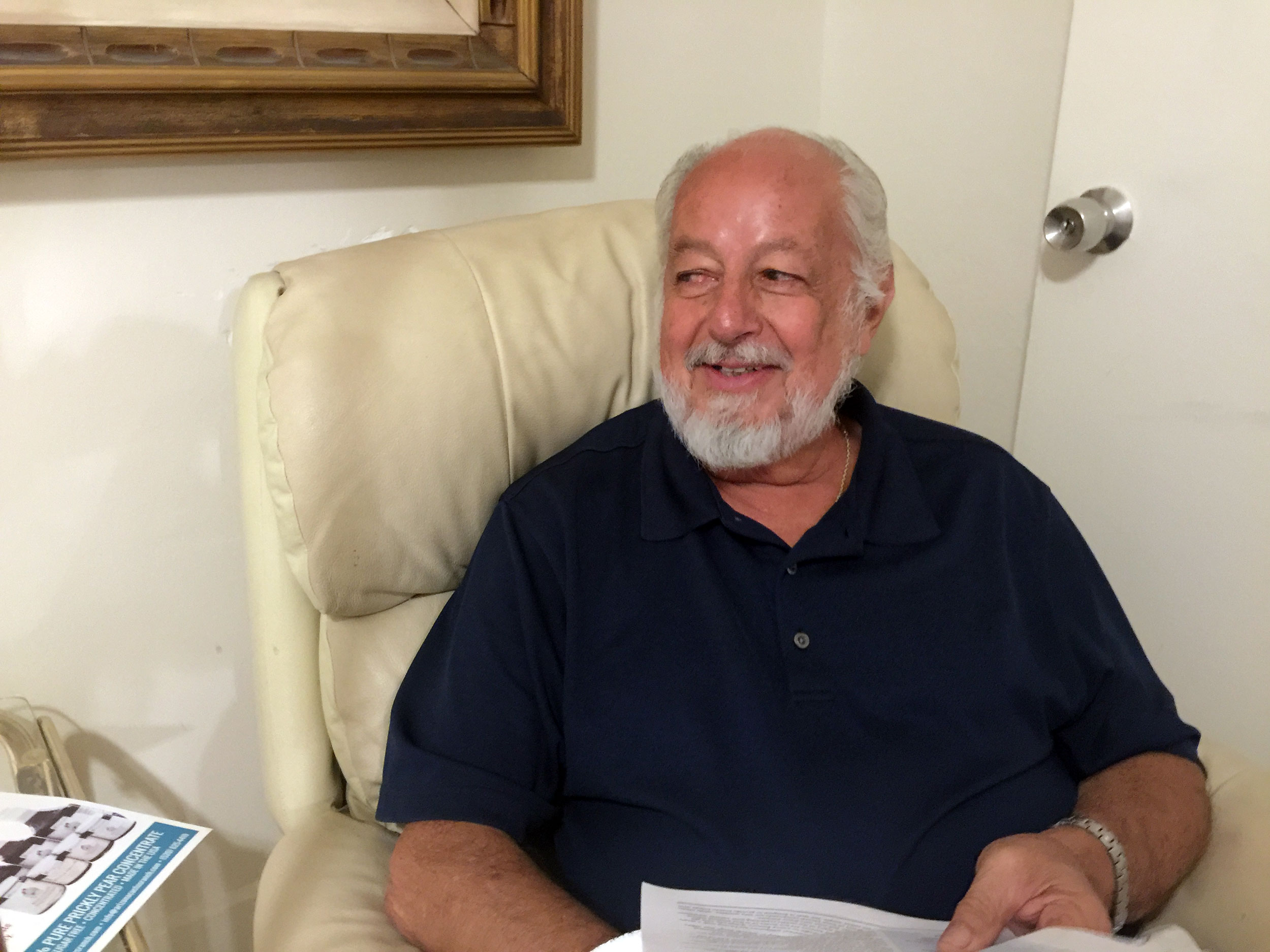Testimonials
I was down in Mexico getting some chelation therapy a few years ago and a story was circulating about one of the patients there. I guess it was circulating because I saw him there. Another client was relaying his story to me.
This man asked his doctor if he should have chelation for his heart blockage. “Are you insane?” Asked his doctor. “If you do that, you will die.” Of course, he stressed the die part. I’ve experienced doctors who sometimes do that.
Well, the man did the chelation anyway. He went down to the Coyle Chelation Clinic in San Luis, Sonora, Mexico. As a nurse was showing him around and guiding him to a comfortable chair to sit in while he had his first treatment, he glanced in the rooms filled with Lay-Z-Boy chairs and whom did he see? His own cardiologist!
Do you think he said, “Imagine seeing you here, Doc?” Uh… no. That’s not what he said. I actually won’t repeat what he said.
I spent 6 weeks this winter in Yuma, Arizona going across the border to San Luis, Sonora. Mexico, to the Coyle Chelation Clinic getting chelated, Hydrogen Peroxide treatments, and Plaquex. It’s been years since I felt this good!
Mr. Ham has been coming to the Coyle Chelation Clinic for many, many years. Before he started taking chelation treatments he had two heart attacks and his doctor told him he needed bypass surgery or he would die. He could barely walk a hundred feet without being exhausted. He decided against bypass surgery.
Before Mr. Ham came to the Coyle Clinic he had gone for chelation treatments at a place in Scottsdale, Arizona — but he wasn’t satisfied with the results. He had heard of the Coyle Chelation Clinic and decided to get chelation treatments here instead. Well, here he is 25 years later and still going strong and still getting treatments.
Last year he hiked to the bottom of the Grand Canyon and back. He gives Dr. Coyle and the chelation treatments he’s received at her clinic, credit for saving his life.
One day, at the Coyle Clinic, a woman came in pushing an oxygen tank on a golf- type cart with tubes running from it to her nose. She was in the advanced stage of emphysema. Her treatments at the clinic consisted of two hydrogen peroxide infusions per week, alternated with EDTA chelation infusions. (The Coyle Clinic will administer no more than two peroxide treatments per week.) After her series of treatments, the woman left without need of the tank. She returned in the fall, again needing the oxygen. She said she waited too long to come back for her maintenance treatments.
Later, another woman came in with the same condition. My wife thought to encourage her by telling her about the other woman. She said she knew her, they were friends and that is why she was there. She was able to go to the restroom without her oxygen tank before the end of her first treatment, a real surprise to her. She also left at the end of her series of treatments without the need of her oxygen tank.
Mr. Dan Roehm, of Pompano Beach, Florida, Chief of the Department of Medicine at Broward General Hospital, certified as a diplomat of the American Board of Internal Medicine and a Fellow of the American College of Physicians, is a prime example of how a good doctor reacts once his interest is high enough to do his own first-hand chelation research rather than just accept blindly the medical party line.
Dr. Roehm was a main-stream cardiologist until his wife began exhibiting symptoms characteristic of sub-clinical mini-strokes, any one of which might one day escalate into a full-blown fatal attack or debilitating episode.
“I had nothing to offer; there was nothing I could do to ward off what I saw on the horizon.” Roehm realized, and so began his urgent search for some way to forestall the looming calamity.
Once he discovered EDTA, he tried it. When it restored his wife’s health, Dr. Roehm added chelation and other alternative treatments to his practice – and says it’s “more satisfying than doing the drug-and-surgery oriented medicine I was practicing before.”
Dr. Grant Born of Grand Rapids, Michigan, became involved with chelation to save himself. He was just forty-three, with no previous history of heart disease, when he went into cardiac arrest while attending a football game.
“My heart just stopped,” he recalls. “They revived me, got me to the Mayo Clinic, where the doctors agreed I needed bypass surgery – perhaps a heart transplant. While I was wrestling with this news, a guy walks into my room with a book about chelation therapy and asks, ‘Do you know anything about this?’ It was like somebody sent him.
“What I read convinced me. I went for treatments. After chelation saved my life, I really got interested.”
Dr. Born speaks from experience when he admits there are social as well as professional pressures NOT to practice chelation.
“My first wife was dead-set against my getting mixed up with a controversial therapy. Even though EDTA helped me survive, she argued against it when I wanted to do it. She worried her reputation with the country club set would be wrecked if word got our that I was practicing ‘quack-style’ medicine.” Dr. Born resolved his problem. He changed specialties and wives.
The new Mrs. Born (Dr. Tammy) has no hangups about chelation – she works at his side.
Dr. Harold Huffman of Hinton, Virginia, is another doctor whose first chelation patient was good old dad.
“It was 1982, and my father, 70 years old at the time, was a diabetic, suffering from diabetic retinopathy, and had already lost one foot because of gangrene and was facing the loss of the other. A physician himself, he knew the prognosis was not good. I called a nurse in Indiana who knew a lot about alternative medicine, and asked her what we could do. She recommended chelation and I say ‘what’s that?’
“She filled me in on the fine details. I learned how to do it, and while I wasn’t convinced it was any good, knew it was dad’s only hope of avoiding a second amputation.
“Talk about reluctant – I don’t remember which one of us had more qualms, him or me. But we sure went into it with our fingers crossed – and were more surprised than anyone when the treatments worked. it saved his remaining leg – even restored his eyesight – and he continued practicing medicine for five more years.”
© By Arline and Harold Brecher







